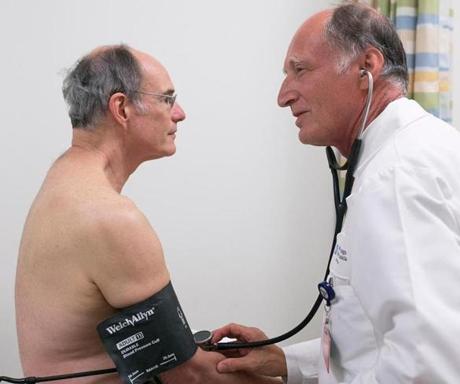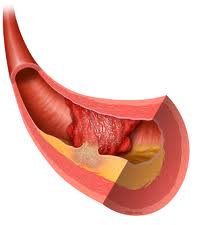 High risk for heart disease? Are you at risk? Certain risk factors for coronary artery disease may place you in a high risk for heart disease category. This means one of two things: Either your risk of developing heart disease within the next few years is high, or you already have atherosclerotic heart disease and don’t know about it.
High risk for heart disease? Are you at risk? Certain risk factors for coronary artery disease may place you in a high risk for heart disease category. This means one of two things: Either your risk of developing heart disease within the next few years is high, or you already have atherosclerotic heart disease and don’t know about it.
If you are over 30 you should make every effort to learn whether or not you have any underlying heart disease (atherosclerosis). If you have it you need to learn how to slow down, stop, even reverse your heart disease. If you are clear of atherosclerotic heart disease you need to prevent it from occurring.
Step 1: Take Your high risk for heart disease seriously
 Unfortunately, a substantial proportion of individuals upon learning that they’re in the “high risk” category turn out to already have significant coronary artery disease – they just don’t know about it because, so far, they are not having symptoms.
Unfortunately, a substantial proportion of individuals upon learning that they’re in the “high risk” category turn out to already have significant coronary artery disease – they just don’t know about it because, so far, they are not having symptoms.
The fact a high-risk patient is not having symptoms is no reason to relax, especially since, in 30% of patients with coronary artery disease, the very first symptom is sudden death. Being at high risk is very serious stuff, and requires a very serious response.
Step 2: Make sure your doctor is taking your high risk seriously
 Finding that a patient is at high risk for a serious cardiac event (such as heart attack or sudden death) ought to elicit a certain type of response from a doctor. The doc should act with alacrity to accomplish two things:
Finding that a patient is at high risk for a serious cardiac event (such as heart attack or sudden death) ought to elicit a certain type of response from a doctor. The doc should act with alacrity to accomplish two things:
- rule out an imminent risk
- modify all the risk factors that are producing the high risk in the first place.
Since some high risk for heart disease men and women will already have previously unknown but significant coronary artery disease, and might be at imminent risk for a cardiac event, an evaluation should be done to rule out this possibility. Generally this should be a stress/thallium study, but in some instances your doctor may think it might be appropriate to go directly to cardiac catheterization. The purpose here is to make sure the person is not in imminent danger of a heart attack.
 At the same time, your doctor should also lay out a clear plan for attacking all modifiable risk factors, including:
At the same time, your doctor should also lay out a clear plan for attacking all modifiable risk factors, including:
- diet
- weight loss
- smoking cessation
- hypertension
- cholesterol
And should initiate therapy immediately. The doc should offer you all the resources at his/her disposal to encourage and assist in exercise, weight loss, and smoking cessation, and should ride you pretty hard about accomplishing these things.
He/she should display an especially aggressive attitude toward reducing LDL cholesterol, increasing HDL cholesterol, and controlling the blood pressure, since accomplishing these tasks is usually primarily the doctor’s responsibility, and since doing so often requires using the right drug therapy in the right doses. In general, controlling cholesterol and hypertension will require fairly frequent office visits and frequent measurements of blood pressure and/or cholesterol levels, as well as many medication adjustments. This all should be done on a fairly aggressive schedule, with clear targets in mind.
 Beware of the doc who puts you on a medication or two, pats you on the back, and then considers his job done. The doctor should clearly understand what “high risk” implies, and should behave accordingly. If this lackadaisical physician is also the one who neglected to mention accessing your cardiac risk in the first place, it’s time to go to someone who will actually care whether you live or die.
Beware of the doc who puts you on a medication or two, pats you on the back, and then considers his job done. The doctor should clearly understand what “high risk” implies, and should behave accordingly. If this lackadaisical physician is also the one who neglected to mention accessing your cardiac risk in the first place, it’s time to go to someone who will actually care whether you live or die.
However, also keep in mind that doctors are human, and human nature makes it difficult to pull out all the stops for a patient who is refusing to act in his/her own best interests. It’s hard to motivate yourself as a doctor to go the extra mile for the patient who just won’t make a genuine and persistent effort to exercise, lose weight, or stop smoking. Which brings us to –
Step 3: Start your own Manhattan Project
 While it is important that your doctor take appropriate action to make sure you are not at imminent risk for sudden death due to a heart attack, stroke or cardiac arrest and to guide you to appropriate risk factor modification, the real responsibility rests with you.
While it is important that your doctor take appropriate action to make sure you are not at imminent risk for sudden death due to a heart attack, stroke or cardiac arrest and to guide you to appropriate risk factor modification, the real responsibility rests with you.
Successfully reducing your risk is something that happens only with your dedication, and it’s not easy. Doing what needs to be done often involves fundamental changes in both attitude and lifestyle of the sort that many people seem not to be able to accomplish. The degree of effort required is akin to the effort the US made to develop an atomic bomb during WWII. It was something that seemed to be barely possible, yet, if we did not do it the risk was high that either the Germans or the Japanese would beat us to the punch. So, against all the odds, we marshaled the resources and did it.
And it’s a good thing we did.
This is exactly the kind of effort you need to make. Against the odds you MUST change your life. If you don’t you will suffer the consequences – possibly decades earlier than is necessary.
That the vast majority of men and women both, who are in the high risk for heart disease category, yet end up making only half-hearted efforts to modify their risk may be related to the failure of primary care docs and cardiologists to stress the utter life-and-death importance of changing lifestyles. Their use of “you really should” instead of “you must, or your children will be orphans.”
Is there any group of docs who have succeeded in getting their patients to stop whatever they’re doing, to suddenly focus every ounce of energy on regaining their health?
Yes. The oncologists.
 Patients who are told they have cancer put everything else on hold and steel themselves to doing whatever is necessary (whether surgery, radiation, or chemotherapy, often painful, and often lasting for months or years) to attempt a cure. Yet …
Patients who are told they have cancer put everything else on hold and steel themselves to doing whatever is necessary (whether surgery, radiation, or chemotherapy, often painful, and often lasting for months or years) to attempt a cure. Yet …
Those who are at high risk for heart disease (the number one killer of men and women) take a more apathetic approach. Makes a lot of sense doesn’t it?
What you MUST understand is that IF you are in the high risk for heart disease group your likelihood of dying or becoming disabled due to a heart attack or stroke is greater than those who have a high cancer risk. You could have a heart attack or stroke today, and die, whereas that likelihood for person with a high risk for cancer is almost impossible.
This is the same attitude that people who are told they are at high risk for heart attack, sudden death, or stroke should adopt. After all, being told you are at high risk for a cardiac event is not all that much different from being told you have cancer. Heart disease is often no less fatal, and the outcome no less dependent on your attitude and your active participation in doing what’s necessary. If anything, you have a much better chance of favorably altering the ultimate outcome than the average person with cancer.
In general, the high risk for heart disease person who is most successful is the one who adopts a “change it all now” attitude. The person who accepts the fact that a complete change in lifestyle is needed. They’ll stop smoking, adopt an exercise program and change their diet all at once. And they do it by making risk factor modification the central organizing theme of their lives.
One day they’re a high-risk-lifestyle kind of person, and the next day they’re not. They take on all the modifiable risk factors at once. The goal of reversing heart disease risk becomes the chief focus of their lives until the new lifestyle is an ingrained habit (and they are a different person). This type of person often achieves remarkable success. But…
When a person has the “I can’t do everything at once,” attitude or mindset, in general, it is a person who doesn’t quite get it. The sort of lifestyle changes that are necessary to reduce the high risk we’re talking about here essentially amount to a complete transformation of attitude, something like the transformation of attitude Americans experienced at about 9 AM on 9/11/01. America became a different kind of country. Those at high risk for heart disease must become a different kind of person.
Life Or Death – It’s Your Choice!
 If you happen to be one that doesn’t quite get it – take note: Your life depends upon taking positive action – NOW!
If you happen to be one that doesn’t quite get it – take note: Your life depends upon taking positive action – NOW!
The more gradual approach to lifestyle changes, while seeming quite reasonable, often does not work. For example, if diet and exercise are postponed until you quit smoking – think about what that means. You’re essentially living the same kind of life you always did except you’re trying to stop smoking. And so…
The smoking never really stops, and the diet and exercise never get addressed at all, and pretty soon a year or two or five go by – and then it’s too late.
My personal theory is that gradualism simply reflects a constitutional failure to accept the deep-rooted changes that are really necessary. Gradualism, in other words, may reflect a lack of the sort of battle-ready attitude that is necessary to achieve the desired end.
Step 4: Clean out your arteries
 As mentioned earlier chances are, if you are at high risk for heart disease, your arteries have already accumulated some degree of plaque even though you have no symptoms – yet. This being the case …
As mentioned earlier chances are, if you are at high risk for heart disease, your arteries have already accumulated some degree of plaque even though you have no symptoms – yet. This being the case …
Another course of action you need to take is to clean out any clogged arteries you may have, even if you do NOT have symptoms yet. Remember, 30% of people who have a high risk for heart disease experience their first symptoms in the form of a heart attack.
The time to clean your arteries and improve blood flow is NOW – before – you have a major cardiac event. To learn how to clean your arteries click here.
